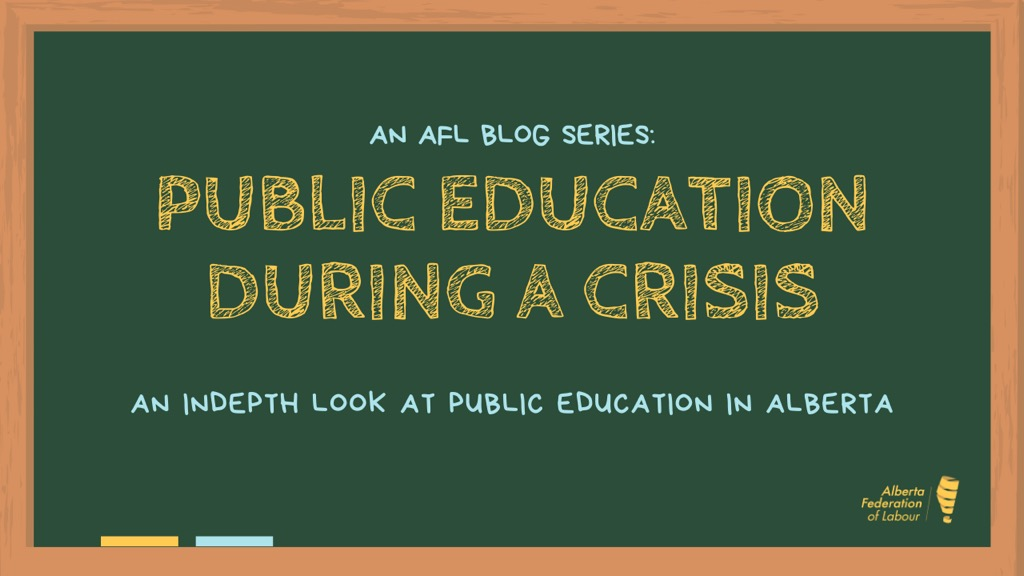Part 7: A Safe School Reopening
Back on March 15, 2020, Minister of Education Adriana LaGrange spoke at the daily COVID-19 update to announce that K-12 schools would be closed for the remainder of the school year, with student instruction moving to online and remote learning. The Minister very clearly and methodically announced that “School authorities will receive their full allotment of funding for the 2019/2020 school year”, a statement that was ultimately not true.
It’s been 20 weeks since that announcement. 20 weeks to plan a safe school relaunch.
It was announced that the government would dictate a province wide approach that school boards must follow, and that decision would be announced August 1, 2020.
But the plan came early.

The School Reopening “Plan”
July 21, 2020, Premier Jason Kenney, Minister of Education Adriana Lagrange and Chief Medical Officer of Health Dr. Deena Hinshaw held a press conference announcing the return to school plans for September. Children and education workers would return to school under the province’s scenario 1: near normal operations.
No class size caps, no school nurses, no protocols for substitute teachers, no mandatory masks or hand washing protocols, no increased funding for school cleaning or buying PPE, no defined parameters for what constitutes an outbreak in a school nor how many positive cases would incite a school closure.
It was an announcement that elicited more questions than answers, with a healthy side of skepticism and concern.
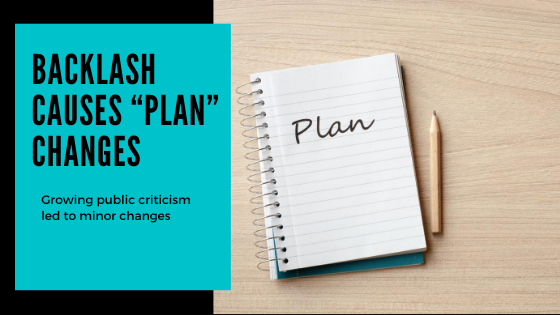
Immediate Public Backlash Causes Minor “Plan” Changes
In an effort to respond to growing public criticism about the school relaunch plan, and the growing evidence that children can and do in fact act as vectors for COVID-19, Minister LaGrange and Dr. Hinshaw announced on August 4, 2020 that in addition to their original scenario, the government would now mandate (in some cases) masks for children in grades 4-12, and provide them each with 2 re-usable masks .
Of course, mask use was only mandated for common spaces like hallways, lunchrooms and buses – while only recommended, based on teacher discretion, for classrooms. The Alberta Government will also now provide masks for education workers and supply 466,000L of hand sanitizer for schools, roughly 0.6L for each of the 740,000 students, for a full academic year.
It was yet another shallow announcement, a lacklustre initiative that provided yet another opportunity for both LaGrange and Hinshaw to display how little they know about the way children, education workers, families and schools operate.
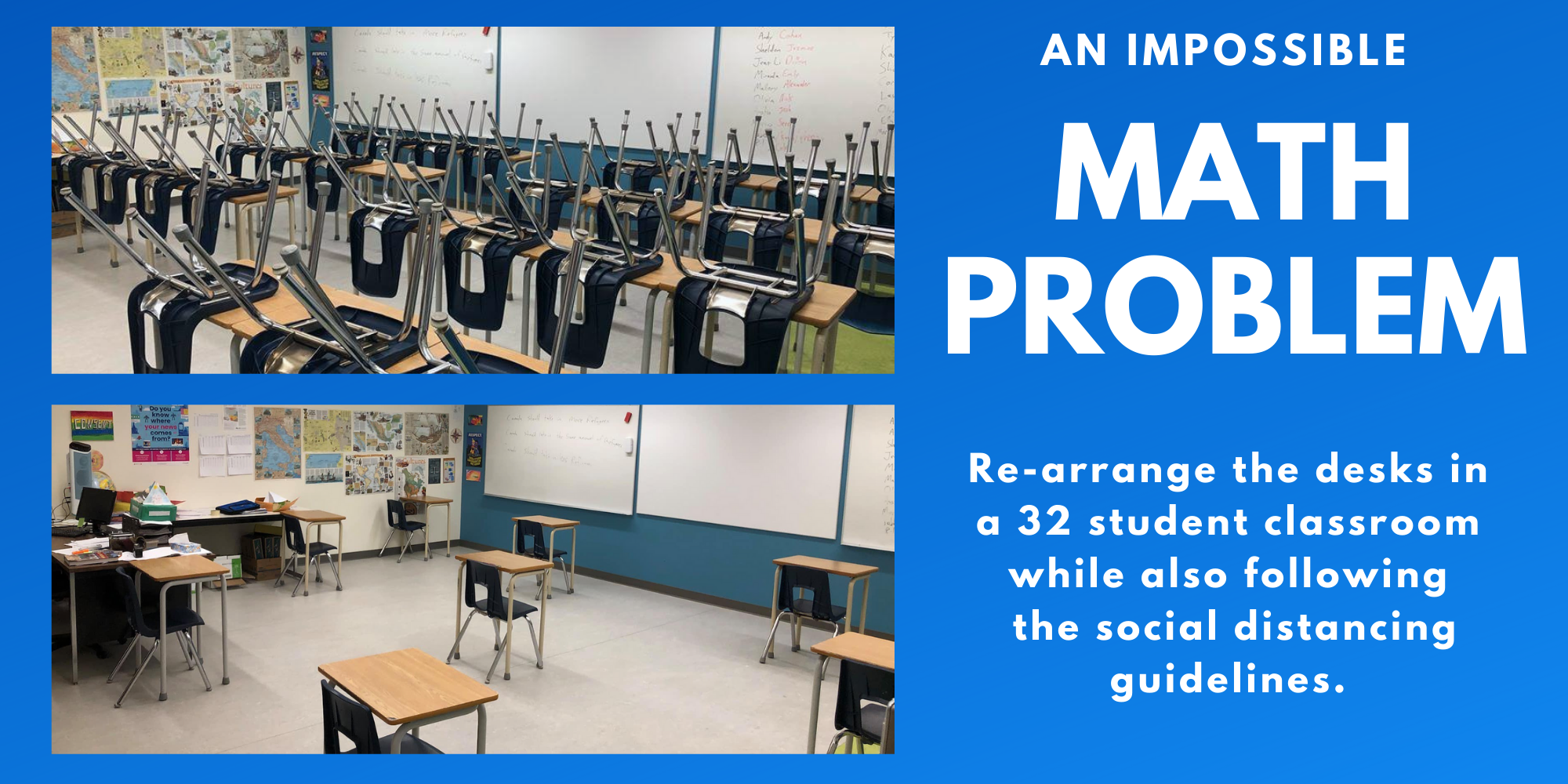
Physical Distancing Not Possible in Most Classrooms
Perhaps the most egregious of all the recommendations is the ever persistent “masks are recommended where physical distancing is not possible” as the template response to questions about mask usage in classrooms.
It’s been over 2 years since Janet French, then of the Edmonton journal, published data on the actual ballooning class sizes of some urban high schools across Alberta.
Teachers, students and education workers around the province seemed to collectively ask, “Where IS physical distancing actually possible in a school?”.
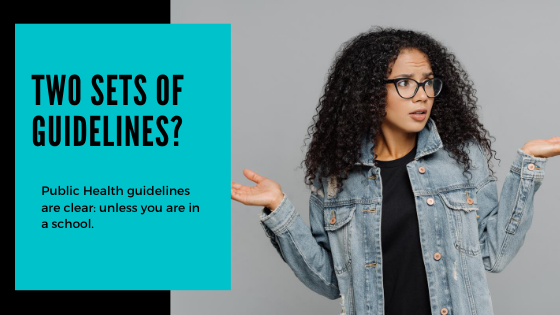
Conflicting Sets of Guidelines?
It’s become evident that there are a set of rules and recommendations for patrons, for businesses, for the general public and then there are rules for those in education.
It’s been said time and time again that our first and most effective line of defence is to maintain 2 metres of physical distance, wear a mask when that’s not possible and to routinely wash our hands with soap and water.
Unless you are in a school.
Then the recommendations change to:
- Teachers can get creative with how they place desks
- But students should all face forward
- Teachers may want to lecture from the front of the class to avoid close contact
- Masks are mandatory, except when a teacher decides they are not or if you are younger than 9.
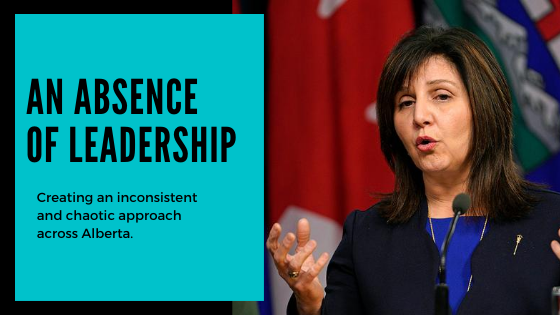
An Absence of Leadership
This is the plan 20 weeks has afforded Alberta.
- 20 weeks: and still no direction for how substitute teachers will move throughout the system or across different schools or classrooms.
- 20 weeks: no effort to cap class sizes or secure space to allow physical distancing.
- 20 weeks: no effort to address poorly ventilated schools, classrooms with no windows, or windows that can’t open.
- 20 weeks: no flexibility to consider a scenario 2 of a hybrid learning model for high school students where class sizes are the highest.
- 20 weeks: no consideration of a gradual re-opening of schools in phases as other jurisdictions have done safely.
- 20 weeks: no plan for how or who will care for children who test positive or require isolation due to symptoms.
- 20 weeks: no plan for job security, for sick leave, for economic aid for caregivers who may end up at home weeks on end with symptomatic children.
- 20 weeks: no consultation on reopening schools with those most impacted: workers, students, families and school boards.
We are 20 weeks in and yet the one and only dedicated provincial financial investment into education in Alberta is a one time injection of a mere $10M for masks, antibacterial products and thermometers. That’s $13.51/student. During a global pandemic.
Relaunching Safely
Dr. Hinshaw is right about one thing, there is no doubt that a 100% safe school relaunch is impossible.
But more can be done to mitigate the risk by capping class sizes, by mandating physical distancing in classrooms, by expediting COVID-19 testing for education workers and students to decrease delays and disruption to schooling.
The UCP could also help Albertans by finally fulfilling their promise of paid sick days for workers who have to isolate, a much needed support for parents and caregivers whose livelihoods may be at risk to care for family members in isolation. And so much more.
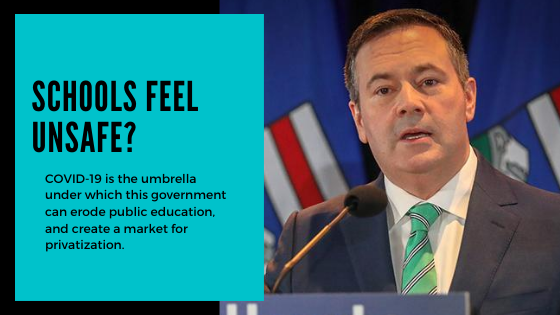
Further Erosion of Public Education
The UCP’s own plan is an abject admission that they are providing Albertans with a second rate solution for a safe return to schools. If by no other metric than the one that has been drilled into the public psyche for months now, that of keeping 2 metres apart, this government’s plan is needlessly failing our children and education workers.
But in the absence of a proper reopening plan, parents will continue to scramble to find alternative, safer options for this fall. Families are being forced to find individual solutions for their children to the collective program we are facing as a province. The lack of a clear safe return plan from our provincial government may very well serve as a catalyst that catapults Alberta into a further fragmented and dismantled education system. One that continues to divert precious resources from the public system to support private and charter options.
This crisis presents an opportunity for “disaster capitalism” to take a hold of public education in Alberta, but there is an equal opportunity now to redefine and refocus public education in ways that address safety and shift these systemic inequities.
Take Action
Now is the time for Albertans to stand up for their public education and to demand a safe return to school. Take a moment to sign Support Our Students (SOS) Alberta’s open letter to Premier Jason Kenney and the School Reopening Survey brought to you by the RAD Educators Network and SOS Alberta.
*The Alberta Federation of Labour is producing a blog series which looks at what happens to public education during a time of crisis. We will evaluate what the Alberta government is doing during this global pandemic, and examine how governments can choose to either strengthen our public system, or use a time of crisis as a catalyst to attack, undermine, and privatize our public education. This is Part 7 in the series.

